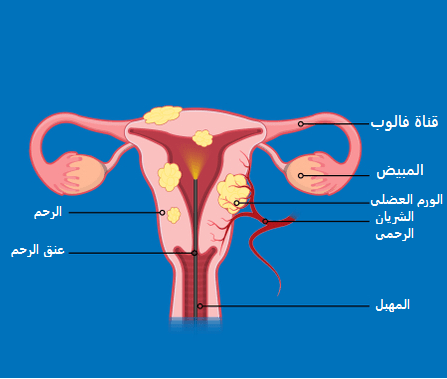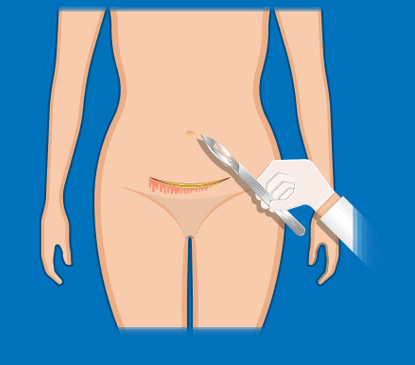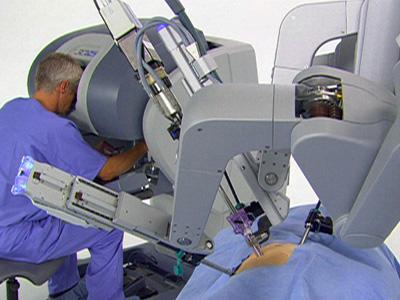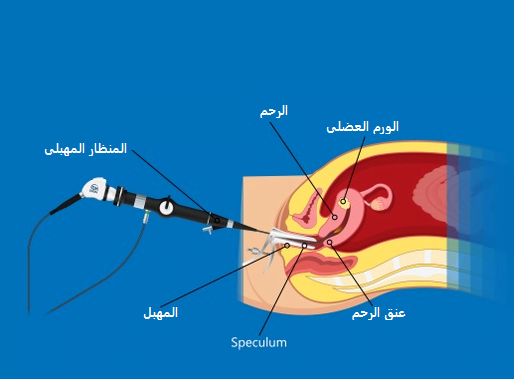Myomectomy in Türkiye
Myomectomy and in English “Myomectomy” is defined as a surgical procedure to remove uterine fibroids . Also called uterine leiomyomas, they are benign (non-cancerous) smooth muscle tumors in the uterus that appear in the childbearing years , especially at any other age. The eradication itself only removes the tumors. The fibroids that cause symptoms and rebuild the uterus, in contrast to the hysterectomy , during which the entire uterus is removed.

Why is a myomectomy performed?
The doctor recommends removing the myoma in the event that its symptoms interfere and hinder daily life and cause strong and disturbing symptoms. However, the choice is made between her and a complete hysterectomy based on the following reasons:
- Future planning for having children.
- Suspicion of overlapping symptoms of fibroids with fertility.
- The desire to preserve the uterus.
Risks of myomectomy:
The procedure has the advantage of having a low complication rate, but no surgical procedure is without risks, including the latter:
- Anemia: Many women with a tumor experience heavy menstrual bleeding. Which causes them to lose excessive blood, so this group is subject to a number of methods to increase blood before undergoing the procedure. In addition to the fact that the procedure itself causes bleeding, doctors try hard to reduce it to the minimum limits through clamps and injecting drugs around fibroids to cause narrowing of blood vessels. But the above does not reduce the risk of needing a blood transfusion.
- Scarring : Surgical incisions may lead to scarring that develops after surgery.
- Complications of pregnancy or childbirth: Myomectomy increases some risks during childbirth, especially if the obstetrician has to make a deep incision in the uterine wall. Therefore, it is possible here to perform a cesarean delivery in the event of a second pregnancy in order to avoid rupture of the uterus during labour.
- Hysterectomy: It is rare, but the uterus is removed in case of bleeding out of control. Or other abnormalities were found besides the fibroids.
- Spread of the cancerous tumor: It rarely occurs if the tumor is divided into small pieces and removed through a small incision. The risk of this occurring increases after menopause and as women age.
Steps to reduce the risks of myomectomy surgery:
- Taking iron and vitamins supplements: taking them increases the blood rate in case of suffering from anemia caused by blood lost during heavy menstrual periods.
- Hormone therapy: Hormonal therapy is another way to increase blood flow by giving gonadotropin-releasing hormone (GnRH), birth control pills, or other hormonal drugs to stop or reduce menstrual flow. menstruation by reducing the secretion of estrogens and progesterone (the pregnancy hormone). Thus reducing blood loss and contributing to increasing the levels of red blood cells.
- Application of fibroid reduction therapies: Doctors first attempt to shrink the size of the fibroid to be removed through GnRH therapy sessions or selective progesterone receptor modulators (SPRMs), allowing them to follow a less invasive surgical approach such as making a small horizontal incision rather than the traditional vertical one. Or laparoscopy instead of open surgery, as the treatment can shrink fibroids and reduce bleeding to the point where surgery is not needed.
Note : Treatment with GnRH causes menopausal symptoms. Such as night sweats and vaginal dryness and disappear after stopping treatment.
Preparing for surgery details:
Food and medicine:
- You should stop eating or drinking in the hours before surgery.
- Changing medication doses or stopping them completely, based on the doctor’s instructions.
Anesthesia:
He chooses between in-place general anesthesia and controlled anesthesia based on the type of procedure and the individual case
- General anesthesia: the patient is in a state of complete unconsciousness and a tube is placed in the throat to breathe. It is used in laparoscopic myomectomy to remove abdominal myomas.
- Monitored sedation (MAC): The patient may be sedated only lightly, or moderately sedated. Or it is so deeply sedated that it is completely unaware of the procedure and the patient may not remember any events during the procedure A tube is not placed in a loop and is used for laparoscopic myomectomy because it is a less invasive procedure and therefore requires less anesthesia.
Procedure types :
The doctor chooses between three surgical approaches depending on the size, number and location of the fibroids

Abdominal myomectomy:
The surgeon makes an open, horizontal, low, bikini-line incision in the abdomen to access the uterus and remove the fibroids.
Laparoscopic or robotic resection:
Several small incisions are made in the abdomen, and the surgeon reaches for the fibroids and removes them through the incisions. The procedure is characterized by being minimally invasive, as the numbers indicate less blood loss, faster recovery, lower rates of complications and scar formation.


- Laparoscopic myomectomy: The surgeon makes a small incision near the navel and then inserts a laparoscope, equipped with a camera and surgical instruments, through other small incisions in the abdominal wall.
- Robotic myomectomy : The procedure is similar to laparoscopic myomectomy but the movement of the instruments is controlled from a separate console.
Vaginal resection:

It is used in the treatment of fibroids that are very swollen in the uterus, where the surgeon reaches the fibroids and removes them using tools that are inserted through the vagina and cervix into the uterus.
After the operation:
The doctor prescribes oral pain relievers upon discharge from the hospital, gives several medical tips and instructions on how to care for wounds, and discusses diet and restrictions on daily activities.
Results:
- Relief of symptoms: Relief of symptoms such as excessive menstrual bleeding, pelvic pain and pressure after myomectomy surgery.
- Improving fertility : Women have a good pregnancy outcome within about a year after surgery, but they should wait six months before trying to conceive, to allow the uterus to heal.
Note: Symptoms may return if the fibroids are not completely removed (because they were not detected). New fibroids are also likely to develop and may or may not require treatment. The incidence rate for women who become pregnant after surgery is lower than for women who did not become pregnant.

Myomectomy in Türkiye:
The medical staff of surgical teams, doctors and consultants in REHABTÜRK can provide the best treatment options and free consultations – by striving to keep abreast of the latest medical technologies and methods.
